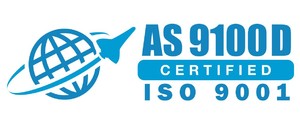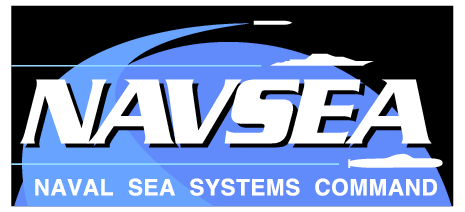Electromagnetic interference (EMI) can disrupt electronic equipment, causing it to malfunction and become less reliable. EMI-shielded enclosures provide a solution to this issue by shielding electronic equipment from these waves and other environmental risks with an aluminum shield.
With shielded enclosures, expensive equipment can be protected, preserving mission integrity and preventing unnecessary downtime.
EMI enclosures include a large variety of types and forms, but always start with high-quality, military-grade aluminum. Typically, one of the following three forms of aluminum is used:
- Extruded aluminum
- Die-cast aluminum
- Molten aluminum
The main reason for this has to do with aluminum’s versatility and lightweight composure. Aluminum is extremely durable and isn’t prone to issues like corrosion or oxidation like many other metals. It’s also highly conductive, which makes it especially effective at protecting electronic equipment.
The actual form of aluminum that is ultimately used (extruded, die-cast, molten) depends on the particular EMI enclosure that is being built and how and where it will be utilized.
Many industries rely on EMI-shielded enclosures to protect their valuable equipment from harm. Some of the most common industries that utilize EMI-shielded enclosures are:
- Military
- Aerospace
- Defense
Keep reading this article to learn more about EMI-shielded enclosures, the crucial role that they play in many important industries, challenges, and solutions related to design, and other helpful information.
Design Challenges: Common Issues Faced in Designing These Enclosures
When designing these forms of aluminum enclosures, multiple challenges can occur. Let’s take a look at some of the most common issues that can occur:
1. Ensuring Effective EMI Shielding
The most significant challenge that must be overcome when designing EMI shielding is ensuring that it is effective. EMI enclosures are often used to protect extremely complicated or valuable electronic equipment, oftentimes in sensitive settings such as defense or military.
This makes it extremely vital to ensure effective shielding, as flaws or failures can be catastrophic (such as during a military operation).
2. Thermal Management
Thermal management is another common issue that must be addressed when designing EMI shielding. It refers to ensuring that your enclosure remains at the proper temperature, protecting the valuable contents inside, and ensuring they continue to operate reliably.
3. Size Constraints
Size constraints can pose a unique challenge when designing these enclosures. Aluminum provides a practical solution in many of these situations, since it is both flexible and lightweight. These properties mean that aluminum is easily molded and can thus be adapted and customized according to client requirements or industry standards.
4. Meeting Industry-Specific Standards
Precision and expertise during the designing and building process help ensure the production of a high-quality product. Discovering innovative ways to meet these common challenges ensures consistency, as well as the future advancement of EMI shielding technology.
Industry-specific standards provide a set of guidelines to help meet these challenges and advance the future of shielding technology.
Material Selection: the Importance of Choosing the Right Materials
Now let’s take a more detailed look at some of the materials that are used to construct these vital pieces of equipment. The materials used can vary depending on the setting and what exactly the enclosure is protecting (such as a navigation system or even a customized project).
Aluminum always provides a reliable base material, thanks to how lightweight, conductive, and durable this metal is. Many other materials can also be used in addition to it.
The material(s) that are selected can play a pivotal role in the effectiveness of the EMI-shielded enclosure. Some other common materials that are used to build these protective structures also include:
1. Metals Besides Aluminum
While aluminum is the main metal used for creating EMI shields, it is not the only one. Copper and copper alloy 770 (copper, nickel, and zinc) are also often utilized, as is nickel silver. These metals are often selected by manufacturers because of their strong resistance to corrosion and conductivity.
Metalloids like boron and transition metal dichalcogenides are also quite popular and provide highly effective shielding from electronic magnetic rays. However, all of these metals and metalloids can regularly be quite heavy, as well as expensive.
Aluminum provides a flexible and high-quality solution that is also more cost-effective than many of the other materials used, which is why industry leaders like NAMF prefer it for their enclosures.
2. Conductive Coatings
The materials used for the conductive coatings can also vary. Some of the most popular materials used are:
- Acrylic
- Plastics
- Silicones
- Conductive-coating paint
Conductive coatings are typically applied as a thin coat, spray, or layer to increase conductivity. Conductive coatings can generate an electric current to protect against electronic magnetism.
3. Gaskets and O-Rings
Gaskets and o-rings help create a further barrier against EMI and create a seal. Typically, these elements are created from materials such as rubber, silicone, or elastomers which both bend easily and effectively protect against EMI.
As we’ve also briefly touched on, several factors that influence the materials that are selected. They include elements such as:
- Conductivity
- Strength
- Environmental considerations
Ultimately, the material used determines the overall durability of an EMI-shielded enclosure. Low-quality materials and lack of attention to detail or environmental considerations can lead to vulnerabilities in the shielding and even failure.
Adherence to industry standards and the selection of appropriate materials help ensure safe and effective EMI shielding. Working with a trusted industry leader such as NAMF to help create these shielding solutions is crucial for the long-term sustainability and success of your operation.
Future Trends and Evolving Challenges in EMI Shielding
Innovation is crucial to continue to meet these challenges and further shape the future of EMI shielding. That’s why, at New Age Metal Fabricating (NAMF), we’re working hard every day to create state of the art EMI enclosure solutions and technology.
Since our foundation in 1979, we’ve been striving to provide the highest quality manufacturing solutions possible, according to industry standards. With over sixty years of experience working with aluminum and designing EMI shielding, we have the knowledge and skill it takes to provide our clients with the best solutions available on the market.
We’ve worked with some top clients in the defense and military industries, helping them create customized shielding technology that protects their equipment and empowers success.
Come see what our industry experts can do for your operation. Get in touch with us today!





